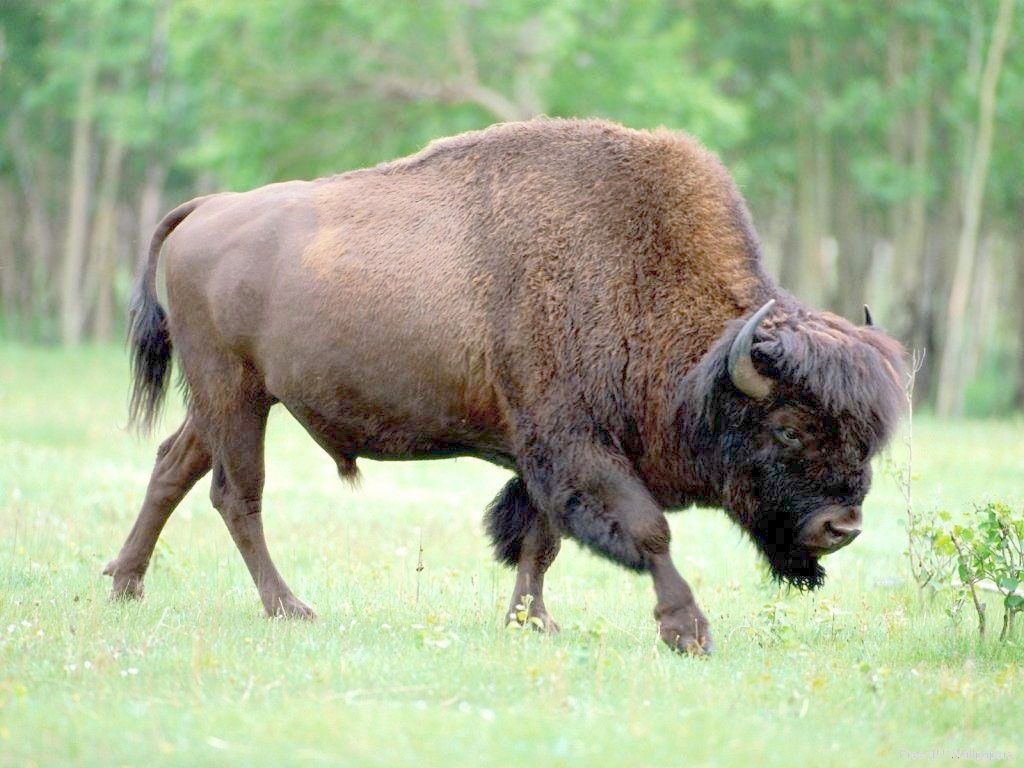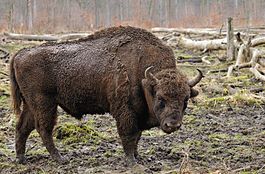Fauna of the Saratov region
The Red Book is a cry of plants and animals for help, voiced in human language. This cry was truly heard by humanity at the end of the 19th century, when the problem of preserving rare and endangered species of animals and plants became obvious. The first international biological agreement - the International Convention for the Conservation of Birds, which also affects the conservation of rare species, was signed in 1902 in Paris. From the middle of the 20th century. Research on the inventory of rare species of flora and fauna has become global. In 1948, the International Union for Conservation of Nature and Natural Resources (IUCN) was created, one of the fundamental decisions of which was the preparation of the Red Book. It was found that over the past three and a half centuries, more than 60 species of mammals and about 100 species of birds have disappeared from the face of the Earth. Currently, 120 species of mammals and 187 species of birds are on the verge of extinction. The publication and maintenance of Red Data Books is an important step in the protection of rare and endangered species of fungi, lichens, plants and animals.
The flora and fauna of the Saratov region is rich and diverse. The high biological diversity of flora and fauna is explained by the physical and geographical position, which determines the uniqueness of the landscape zones of this region. The diversity of natural conditions is associated with the large extent of the territory from west to east and from north to south. Both typical representatives of forest-steppe, steppe and semi-desert, as well as cosmopolitan species, the number of which is especially large in the floodplain communities of the river, grow and live on the territory of the region. Volga. Thus, any natural landscape of the Saratov region unites this diversity into an inextricable unity of flora and fauna. Vegetation creates a living environment for animals, and they enrich it, giving each corner of nature its own individuality and unique beauty.
The flora of the Saratov region includes about 2000 species of vascular plants. This is significantly more than in neighboring regions. The high floristic richness of the region is determined by diverse natural and climatic conditions and the complex history of the formation of vegetation cover. The main specific feature of the flora of our region is its borderline nature. In the southeast of the region there passes the most important floristic boundary - the border between the Boreal and Ancient Mediterranean subkingdoms. The most important geographical boundaries are also the Volga Valley and the Volga Upland. In the Saratov region, typical semi-desert plants grow just a few kilometers from the species of northern coniferous forests.
The fauna of the Saratov region includes about 500 species of vertebrates and more than 20,000 species of invertebrates. The diversity of natural conditions determines their joint distribution within the region. Animals with different requirements for the environment give rise to a mixed composition of the animal world. Due to its large area, the territory of the Saratov region represents a very heterogeneous ecological living environment for the animals inhabiting it. Some species prefer forests (mixed, coniferous and deciduous), others gravitate to steppe and semi-desert landscapes, and still others to floodplains, coasts, water meadows, Cretaceous deposits of the Jurassic period, ravines and ravines. Depending on the needs of life and natural conditions, each species of animal within the Saratov region finds the living conditions it needs, chooses the habitat it needs for normal nutrition and reproduction, with good protective conditions and microclimate.
Today, the situation with nature conservation in our region is not satisfactory. In the Lower Volga region there is no other region in which differences in the nature of the relief, climate, distribution of flora and fauna, and the diversity of natural and artificial ecosystems are so sharply manifested. However, over the past decades, there has been an accelerating depletion of the species composition of animals and plants in natural complexes and a sharp increase in the number of rare and endangered species.
The main reason is global and local changes in living conditions, destruction and contamination of natural habitats of plants and animal habitats. For example, in some areas of the Volga region there is no more than 8-10% of natural lands untouched by humans. They have survived only in ravines and ravines, floodplains and areas not suitable for agriculture. It is here that plants and animals rush to save themselves, and it is here that we find endangered species.
To our greatest regret, the ecosystems of the Saratov region, especially in the Volga region, are destroyed like in no other region. Abandoned fields overgrown with weeds make a depressing impression. Traces of land degradation caused by ineffective land reclamation, the consequences of excessive application of mineral fertilizers, the use of herbicides and pesticides, untreated industrial wastewater, overgrazing of livestock, abandoned agricultural machinery, spilled fuels and lubricants, etc. are visible everywhere. In the atmospheric air, drinking water and food products, the number of agents adversely affecting people and living objects has increased, new highly toxic impurities have appeared in the emissions of industrial enterprises, electromagnetic fields have intensified, the area of eroded lands is growing, the structure and salinization of soils is being destroyed, their fertility and water bodies are depleted. Soils are increasingly contaminated with salts of heavy metals.
The population of plants and animals is adversely affected by the widespread reduction in forest area, plowing of virgin and fallow lands, desertification, scientifically unsubstantiated land reclamation, and significant recreational pressure on nature. Habitat destruction often results in mosaic halos. They break up into small sections isolated from each other. Fragmentation of the halo may ultimately lead to the complete extinction of the species over large areas.
Excessive collection of plants and hunting of animals, poaching and unregulated fishing often lead to a sharp decline in the numbers of even widespread species of plants and animals. Accidental destruction causes great damage to fauna: animals die from severe frosts, drought, prolonged river floods, high water in reservoirs, drying up of reservoirs, various natural disasters, getting caught in fishing nets, chemical pollution of the environment with pesticides and heavy metals, and oil during pipeline accidents. The reason for the sharp decline in numbers may also be the introduction of a new species, especially when they occupy the same ecological niche as a native animal. For example, the number of European mink in our region has sharply decreased with the appearance of American mink here. A lot of wild animals die under the wheels and tracks of vehicles, especially at night.
Man, having overloaded natural ecosystems, has destroyed the mechanism for regulating the flow of matter and energy occurring in the environment. Thus, the main reasons for the unfavorable situation on the planet is human ignorance of the laws of existence of the biome - the living matter of the planet, which has been formed since the origin of life on Earth - more than 4 billion years ago. years ago. The onset of environmental disasters is due to the fact that people ignore the laws of development of the biosphere. Previously renewable resources (air, water, soil, animals, plants) are now restored with great difficulty, since as a result of human economic activity, huge amounts of various substances known to the biosphere are released into the environment - carbon dioxide, nitrogen and phosphorus compounds, salts, metals, etc. Thus, the destruction and development by humans of the natural habitats of plants and animals poses the main threat to their existence. Therefore, the organization of nature reserves, national parks, wildlife sanctuaries and other protected areas is of utmost importance for the conservation of flora and fauna. One of the methods of preserving wild animals is breeding them in captivity. Such experience exists: the regional hunting department, and then the Saratov branch of the Institute of Ecology and Evolution. RAS worked on and tested methods for breeding birds of prey and reptiles in captivity. The installation of artificial nests, primarily for birds of prey, also produces positive results.
The protection of flora and fauna is a very complex matter, requiring the efforts of government and public organizations. To determine many or few individuals of a particular species in nature, long and labor-intensive work of botanists and zoologists is necessary. We judge some species of plants and animals literally from isolated finds or are found in nature, often at large intervals. Therefore, there remain species about which we know very little, especially about those that have been discovered in the region over the past ten years.
The nature of the Saratov region attracts with its original Russian beauty, the widest Volga River and its enchanting banks, splashes and rifts, the extraordinary beauty of deciduous and mixed forests, glades and edges with a riot of flowers, a variety of insects and birds, peaceful gentle hills and steep Volga cliffs, endless open spaces meadows, steppes and fields, silver springs, countless mineral wealth, diverse and in many ways unique animals and plants. While we still have beautiful and indestructible corners of nature.
The Red Book is not just a “safeguard” for wild plants and animals: it is an alarm signal, it is information about the current situation of a species in trouble; these are recommendations for its protection measures, this is an indicator of <



No comments here yet.